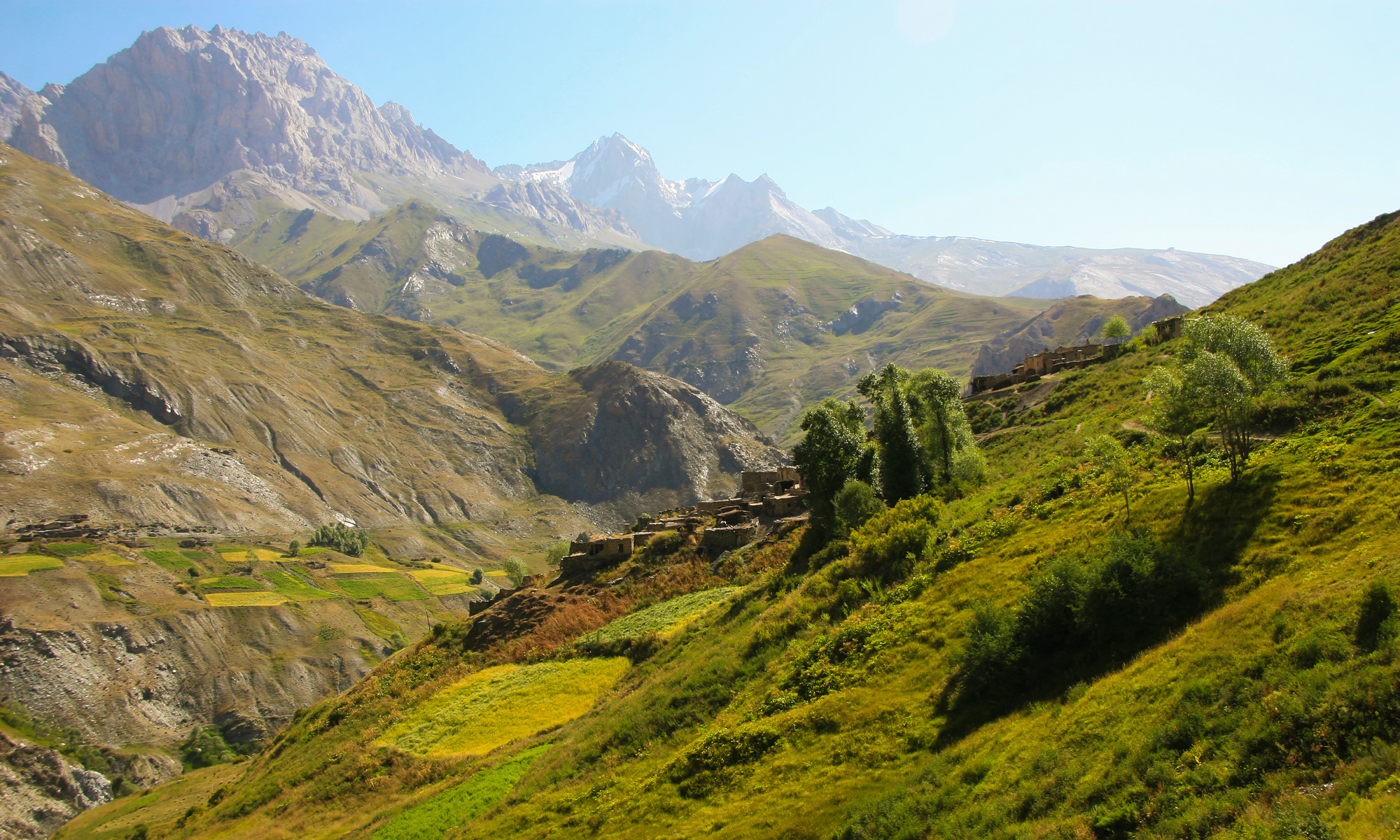In Yagnob Valley the water does not come from taps. It is fetched, hauled, and carried—liters at a time, day after day, along steep trails etched by memory and necessity. It comes from springs tucked into rock crevices, or from streams that shrink by midsummer. And most often, it is women and girls who carry it.
This daily labor, hidden in plain sight, is more than a question of convenience. It reveals the infrastructure gaps, gendered burdens, and environmental vulnerabilities that shape life in Yaghnob today. In a place already marked by displacement, ecological fragility, and social reconstruction, water access has become both a survival task and a political fault line.
According to the public health survey data and infrastructure assessments from returnee communities, most villages in Yaghnob lack formal water systems. There are no municipal pipelines, few household wells, and limited rainwater catchment infrastructure. Springs—often seasonal—remain the primary source of water.
Fetching water is rarely a short task. In many villages:
-
Springs are located hundreds of meters downhill, requiring multiple daily climbs.
-
In winter, trails become slippery and dangerous, with sub-zero temperatures and snow.
-
No carts or mechanized tools are used; water is carried by hand, shoulder, or rope harness.
Girls often accompany their mothers—learning not only the location of water sources, but their seasonal rhythms: which ones dry up first, which run fast after rain, and which freeze in early frost.
As across many parts of Central Asia, water collection in Yaghnob is a gendered task rooted in necessity, not choice. The division of labor reflects both cultural norms and environmental realities:
-
Women manage water for cooking, washing, hygiene, and livestock.
-
Men may help build irrigation channels or repair access paths, but rarely fetch water daily.
-
Children—especially girls—are involved early, often before age ten.
From the 2012 returnee survey:
“If the water comes slow, we wait. We wait in silence. Sometimes we sleep near it.”
This quiet resilience carries with it an unacknowledged cost—of time, of health, and of opportunity.
Carrying 15–20 liters of water multiple times a day has cumulative health impacts, particularly in high-altitude terrain. Though rarely documented in formal health records, community interviews and field reports suggest:
-
Back and joint injuries are common, particularly in older women.
-
Falls on icy or unstable trails are frequent, sometimes resulting in fractures or concussions.
-
Respiratory illness is exacerbated by winter water-fetching in cold, wet clothing.
-
The time burden of water collection often limits women’s participation in education, livelihoods, and local governance.
Water collection becomes not only a health issue, but a development bottleneck—one disproportionately carried by women.
Climate variability has added new dimensions to this struggle. Springs that once flowed year-round are now increasingly seasonal or intermittent, affected by:
-
Reduced snowpack and glacial melt
-
Overgrazed soils with declining water retention
-
Slope instability and minor landslides that block or reroute flows
As sources shift or disappear, women must walk further. In some cases, inter-village tensions emerge, especially when multiple communities rely on a single spring.
“The old water was clean. It was ours. Now we walk to someone else’s spring. We wait until they’re finished.”
In a region without formal water rights or supply regulation, access becomes precarious—and deeply political.
Despite the lack of formal systems, Yaghnobi women have long developed low-cost, adaptive techniques to meet water needs:
-
Improvised containers: old bottles, oil jugs, and metal kettles reused for transport and storage
-
Rope harnesses: hand-woven from discarded clothing, designed for weight distribution
-
Cache sites: stone alcoves built along steep trails for rest or mid-route storage
-
Snow melt collection: stored in shaded pits or clay-lined basins
These techniques reflect local innovation under constraint—but they are no substitute for safe, sustainable access.
As the proposal for a Natural-Ethnographic Park in Yaghnob gains traction, water infrastructure must become a central priority—not only for health, but for gender equity, ecological resilience, and community stability.
Recommended Actions:
-
Gravity-fed water systems tapping existing springs, with communal storage tanks
-
Spring protection projects, including fencing, erosion control, and reforestation
-
Community-based water committees, with women as key stakeholders
-
Training programs for youth on water testing, maintenance, and sanitation
-
Integration of water equity goals into environmental conservation plans
These interventions must be participatory, not prescriptive—building on existing knowledge and reinforcing, not replacing, the informal systems already in use.
To carry water uphill is not simply a domestic task—it is an act of persistence, an inheritance of care passed from mother to daughter, generation to generation. It marks the intersection of environment, gender, and survival in one of Tajikistan’s most remote valleys.
In a place where every spring has a name, where stories are washed in rivers and footsteps wear stone paths smooth, water is not only a resource. It is memory.
